Is this the first sustainable ski resort in the Alps?
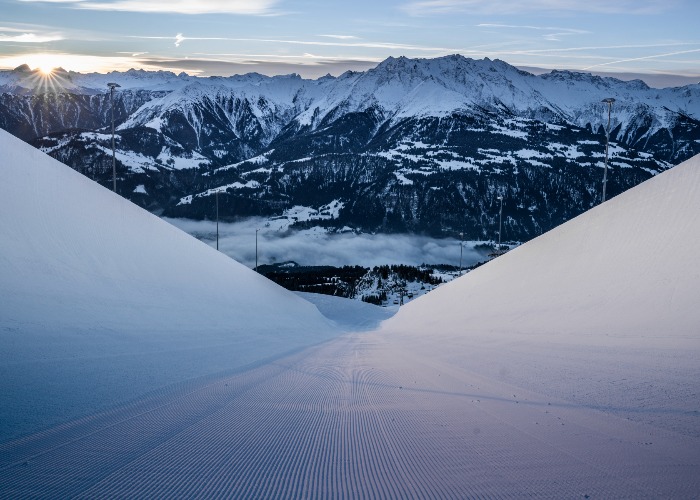
Warmer winters are melting snow and making ski trips even more unpredictable, but Swiss ski resort Laax hopes to counteract the sport's environmental footprint. We discover the innovations that could make carbon-neutral skiing a reality within the decade...
As the cable car whirrs silently up the mountain, snowboarders slicing their way down corrugated pistes, something seems amiss. Branches poke out of the snow. Every needle on the tall, dark pines stands out in a vivid shade of green. And, although we’re heading up to an altitude of 7,425 feet (2,263 metres), it doesn't feel cold.
I’ve arrived in the Swiss ski resort of Laax days after some of the warmest winter weather ever recorded in Europe. Although Laax avoided the worst, ski destinations at lower altitudes were forced to close due to lack of snow. As we gaze at the rather patchy blanket from up high, even Sven, my ever-chirpy ski instructor, expresses concern. “Only 90km of our 200km of ski runs are operational at the moment. We’ve had to use snow cannons to salvage them”.
Skiing is, by nature, not particularly sustainable. Trees are cut down to make room for runs and lifts. It then requires an immense amount of energy (typically from fossil fuels) to support the resort, lifts and slopes. Plus, the artificial snow that keeps runs open can drain lakes and often contains high concentrations of minerals that seep into the natural environment.
READ MORE: Shocking reasons why we can't ignore climate change
Sustainable skiing
Determined to shake up skiing for the better, Laax has implemented a radical plan to become the first completely carbon-free resort in the Alps by 2030. The vision has a catchy nickname: 'greenstyle'. The programme launched in 2010, spearheaded by beanie-sporting Reto Fry, the sustainability manager at Weisse Arena Group (Laax’s operator). It has already hit significant targets.
.jpg) Laax
Laax
Since 2008, all the town’s electric needs have been met by hydroelectricity generated from the cerulean lake in front of my hotel, the rocksresort. Solar panels are being erected on all new buildings, while fuel oil heating is set to be completely scrapped. E-transport is everywhere you look. Perhaps most cleverly, excess heat from the ski lifts is recycled and used to warm up the resort’s buildings.
.jpg) Laax
Laax
Up on the mountain is Laax’s most ambitious project of all: the GALAAXY ski station, a UFO-esque rotunda that welcomes me to the ski area with two stellar restaurants, a hostel, beach-style bar and even a groovy co-working space. Cool though it looks, the 1960s building is the resort’s worst environmental offender; for example, its single-glazed windows lose heat faster than an Olympic skier on a black run.
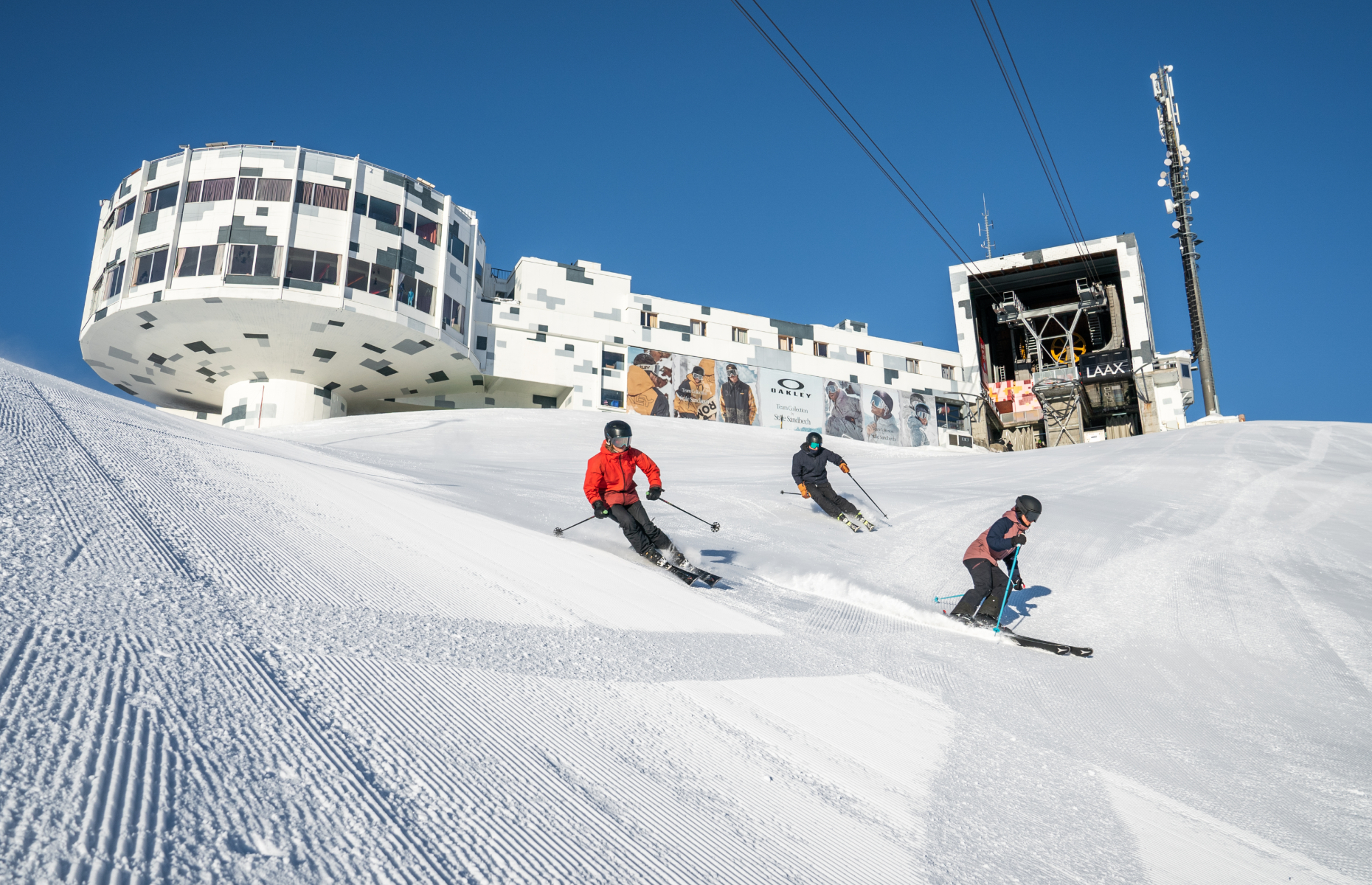 Laax/Philipp Ruggli
Laax/Philipp Ruggli
Mercifully, the building is set to get better insulation, and by 2030, it’s hoped that GALAAXY will be transformed into an energy producer – not only producing enough green energy to power itself, but also contributing to the Swiss national grid.
As we stroll under the strong sun of a clear Alpine day, Fry explains how. “I’m a big fan of solar. It has the potential to cover all the energy demands of the destination, plus it’s cheap, environmental, local and doesn’t damage biodiversity”. Solar panels are up to 50% more efficient at higher altitudes, so the town can use its lofty geography to its advantage.
The plans are so ambitious, they have been subject to delays. “If we keep going at the speed we have been, it would take hundreds of years. We need to become much faster”, Fry laments.
There are also issues beyond Laax’s control, starting with the pristine piste we’re walking on. Snow grooming – the process of using machines to make the snow smooth for skiiing on – is the biggest challenge. "We can’t buy any equipment that’s completely electrified,” Fry explains. And if Reto was a big fan of solar, he certainly isn’t of hydroelectricity, which makes up about 60% of Switzerland’s national output – but destroys ecosystems in the process.
We ponder this obstacle at the edge of the halfpipe, watching pro snowboarders prep for the Laax Open, a massive freestyle competition that will bring boarders from all around the world to Laax.
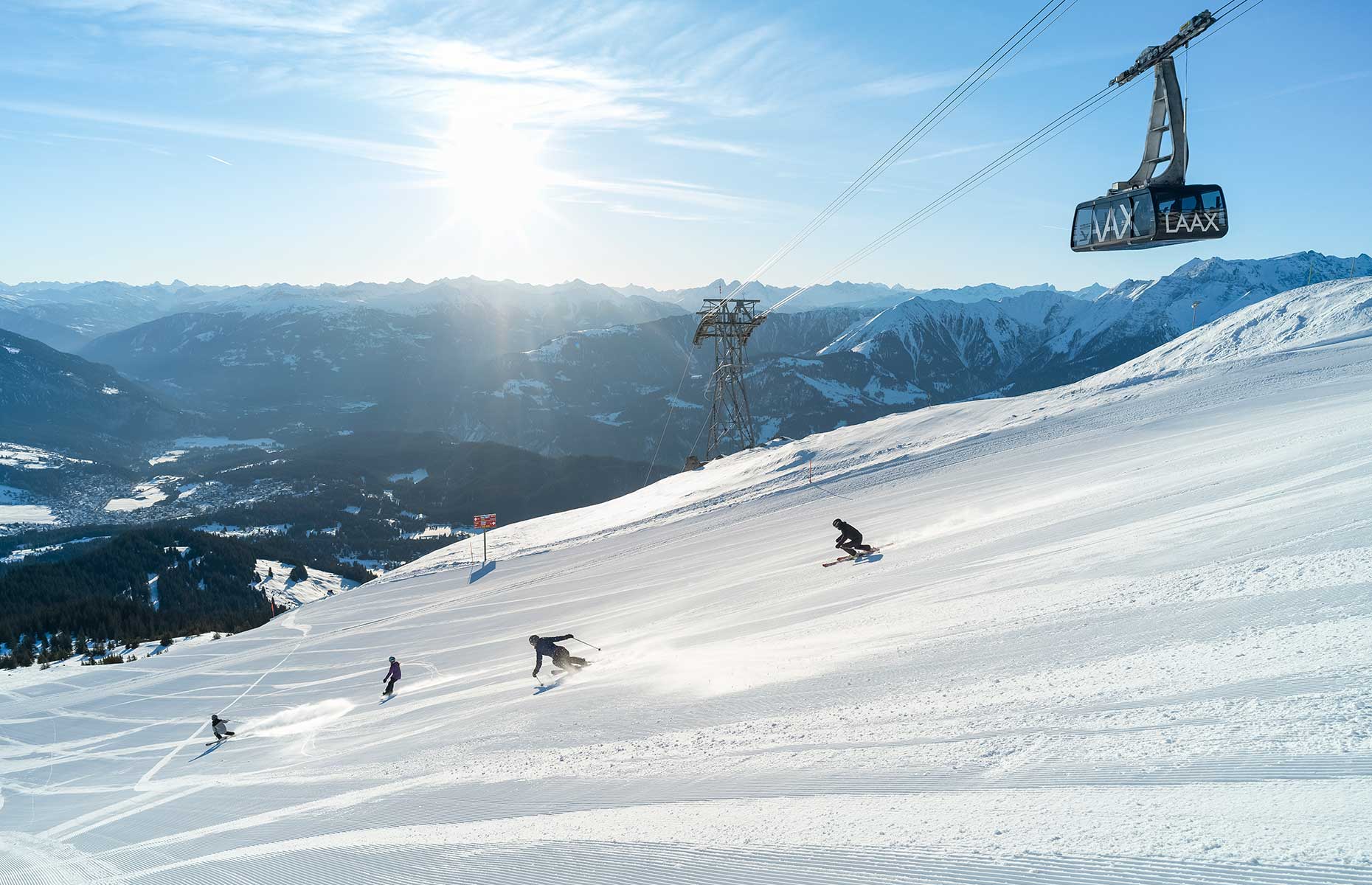 Laax
Laax
Skiing for dummies
Fortified by a hand-warming cup of schoggi (hot chocolate), Sven and my band of beginners set off for the training slope. I hadn't clipped my foot into a ski boot until that very morning, but Laax’s laid-back vibe instantly puts paid to the jitters. Thanks to its special relationship with snowboarders, Laax attracts a cool crowd, from local teenagers to international pros. Learning is all part of the fun.
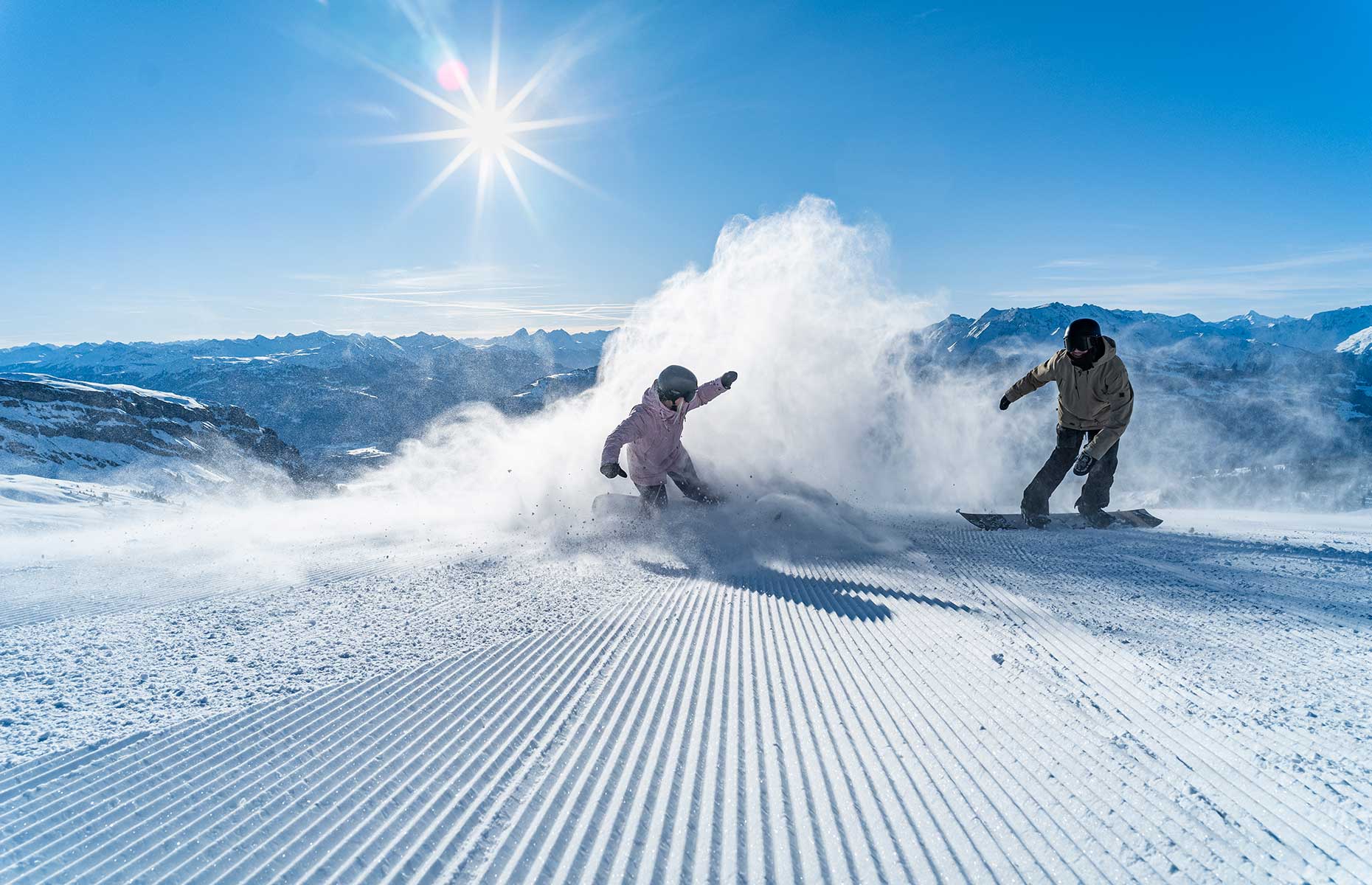 Laax
Laax
In a matter of hours, we’re shown how to walk in skis (harder than it sounds), how to glide and, most importantly, how to stop. I faceplant the snow more than once, but the saint-like patience of Laax’s instructors pays off: at the end of our first day, we’re skiing at some speed. Tomorrow, we learn how to turn. Next stop, the world.
READ MORE: Snow holidays for non-skiiers
Eco apres-ski
There are two parts to any ski trip: the hard bit, and the apres-ski. Think fondue (of both the cheese and chocolate varieties) and tankards of locally-brewed beer. Currently, half of all the ingredients used in Laax’s restaurants come from the local area, set to increase by another 25% in the next few years.
The Riders’ Restaurant is already ahead of the game. The first fully vegetarian restaurant in the Alps, its 28-year-old head chef Pascal Bertschinger cuts down food miles by buying all of his ingredients locally, from rosy pear cider to crunchy carrots grown a few miles below. Don’t expect a selection of stalwarts: the three- to five-course menus change weekly depending on what’s seasonally and regionally available.
“It’s easier for the kitchen, and you can plan much better by only offering a few dishes. It’s a nice opportunity to be creative”, says Pascal as he grates a gnarly Berner Alpkase cheese onto my soft spatzli dumplings.
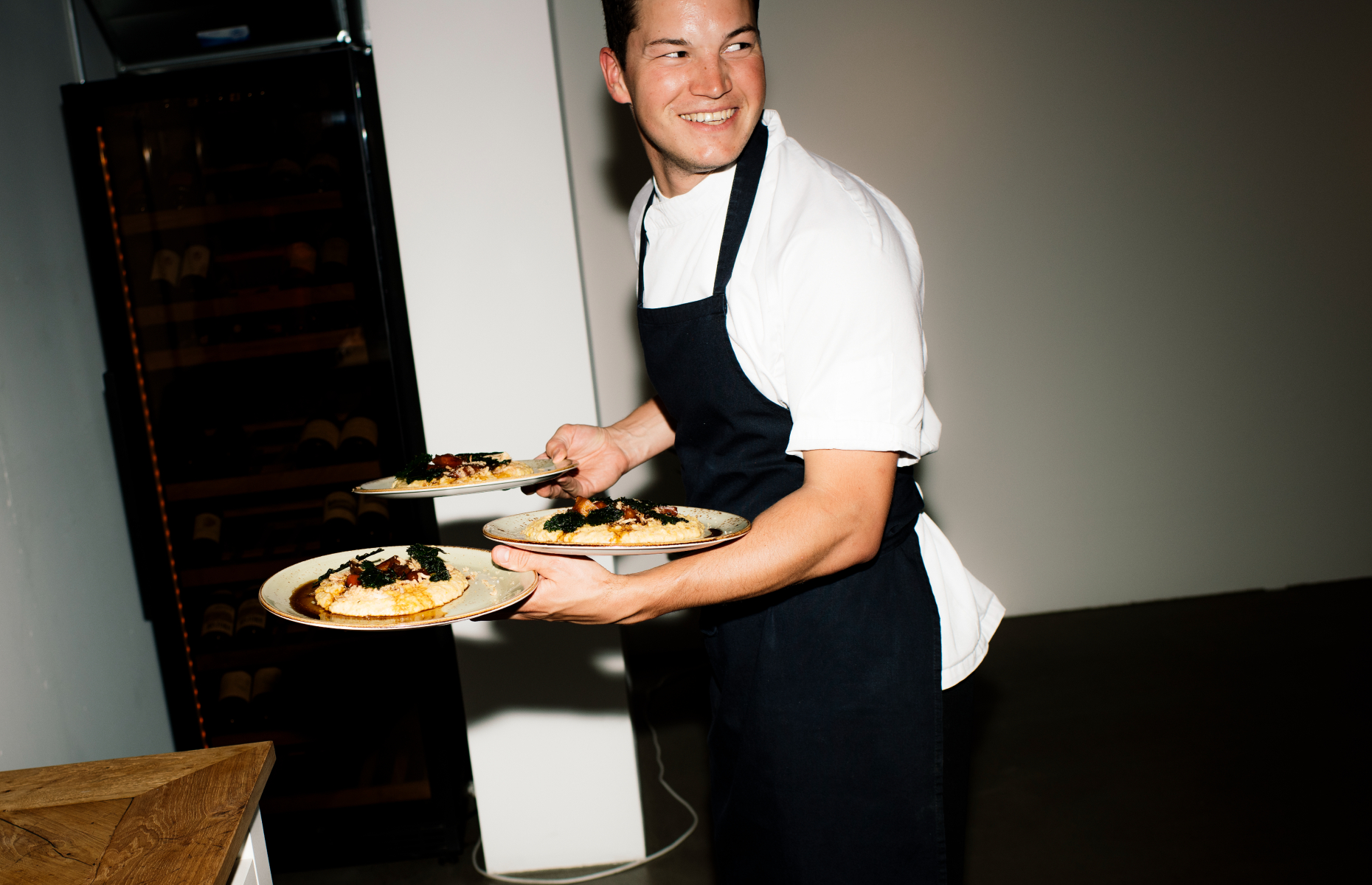 Laax/Dominic Zimmermann
Laax/Dominic Zimmermann
Efforts to reduce food waste continue behind the scenes. Bertschinger leads me through his metal kitchen to show off the hi-tech (and Swiss-built) bin system. “We use smaller plates here, so there’s less waste, but you still get full”. In the event some morsels do get left, there are cameras installed over the bins and data on what gets wasted is sent to the chefs. It’s a win-win for the world and for the resort, as the cameras add up how much money is wasted at the end of every month.
The future of skiing?
For Laax, sustainability isn’t just about saving the planet: it’s also about saving cash. “We want to lead by example, but also to profit from it”, says Fry. He estimates the resort makes 500,000 Swiss Francs (£448,358) of energy savings per year.
On the day I leave Laax, snow falls, covering the trees in the white veil they should have at this time of year. Those who live and work in Laax breathe a sigh of relief: winter is back, but warm spells are becoming worryingly more common.
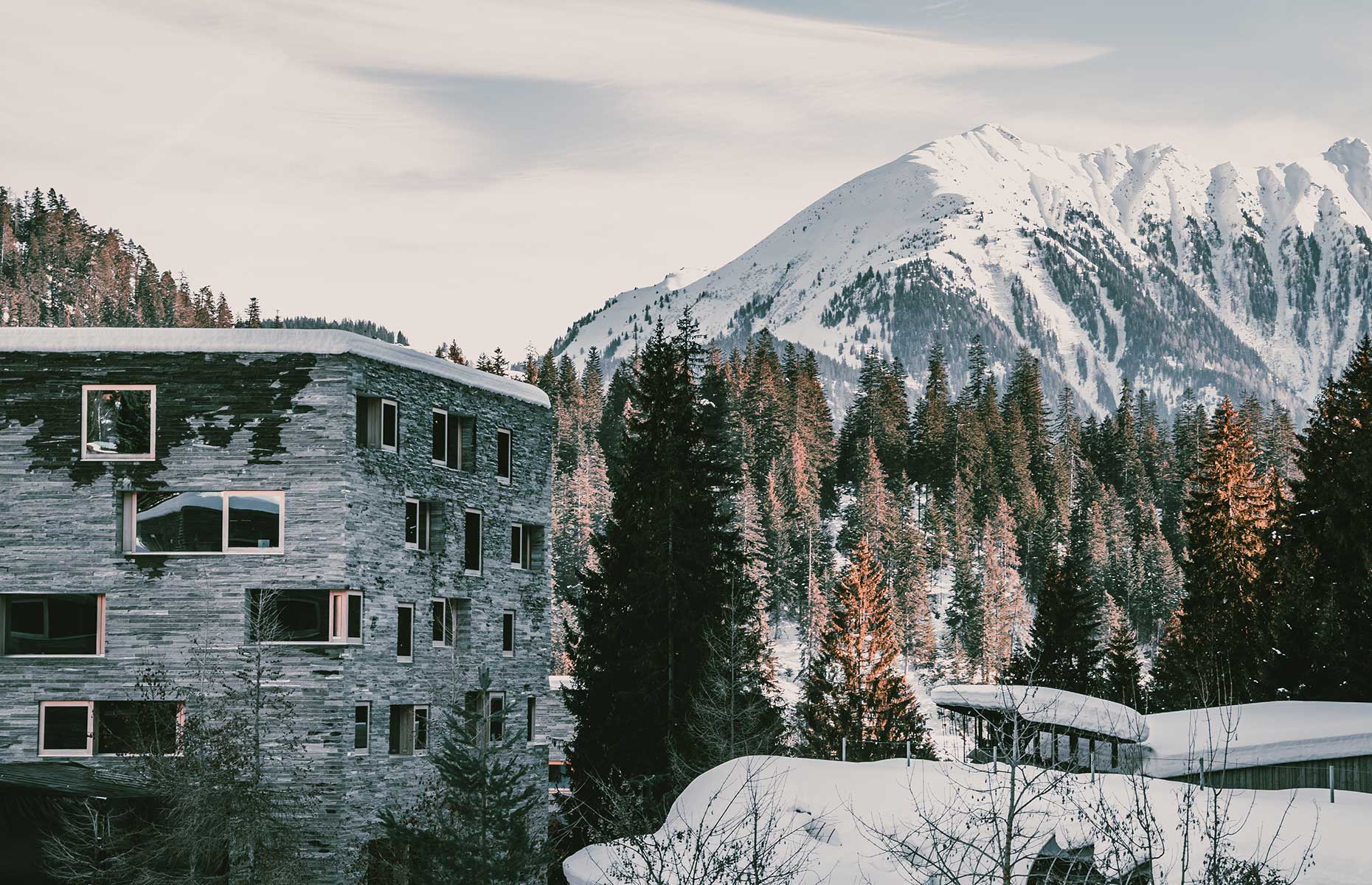 Laax
Laax
Are ski resorts operating on borrowed time, I ask Fry? “If we get to the point where we can no longer ski, we have far bigger problems than that, ” he says. But Laax is doing more than its fair share to hit net zero and has inspired other resorts, such as nearby Arosa, to follow in its low-carbon footsteps. “It’s not about not skiing anymore – you can’t just turn it off. It’s about making it more sustainable”. Perhaps that goal is closer than we think.
For more information, visit www.flimslaax.com/en. Alice was a guest of Swiss Airlines and the rocksresort, where double rooms start at £254 (290 CHF) per night, including breakfast. It's easy to reach Laax by public transport – simply hop on the 81 bus from Chur's main train station.
Main image: Courtesy of Laax
READ MORE: Why the Jungfrau region is the sustainable star of the Swiss Alps
Comments
Be the first to comment
Do you want to comment on this article? You need to be signed in for this feature